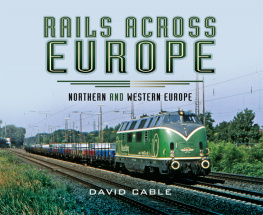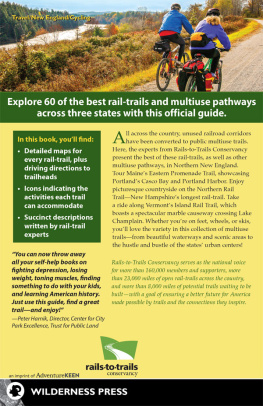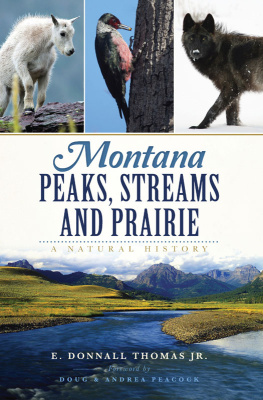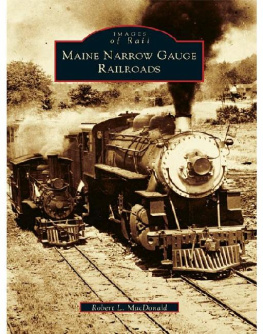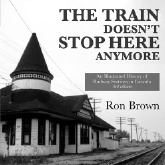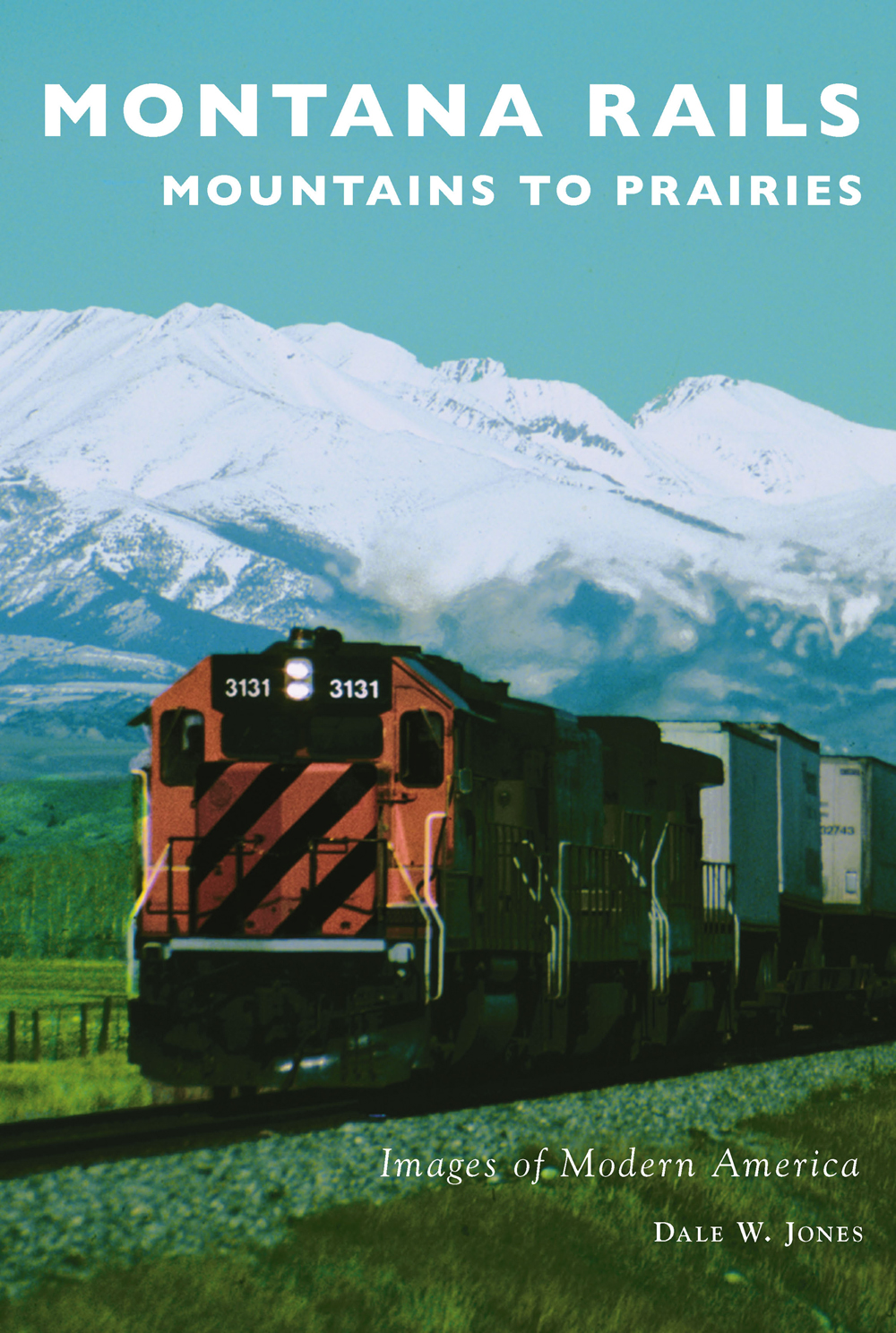
Images of Modern America
MONTANA RAILS
MOUNTAINS TO PRAIRIES

American railroads once commissioned posters encouraging travel. During the 1920s, the Northern Pacific Railway hired Vienna-trained artist Gustav Wilhelm Krollman to portray scenery along its line. Here, the North Coast Limited appears to fly by Emigrant Peak in the Paradise Valley one of many scenic attractions that awaited passengers on a trip to Yellowstone National Park. (Authors collection.)
ON THE FRONT COVER : The snow-capped Crazy Mountains are a fine backdrop for Burlington Northern train No. 121, with Tiger Stripe No. 3131, traveling Montana Rail Link track at Mission Siding near Livingston on May 14, 1989. (Ed Lynch.)
UPPER BACK COVER : Amtraks Empire Builder skirts the southern boundary of Glacier National Park. (Photograph by Dale Jones.)
LOWER BACK COVER (from left to right): Montana Rail Link on Winston Hill (photograph by Dale Jones), Milwaukee Road boxcabs (C.G. Heimerdinger Jr.), Burlington Northern Santa Fe (BNSF) at East Glacier Park (photograph by Dale Jones).
Images of Modern America
MONTANA RAILS
MOUNTAINS TO PRAIRIES
DALE W. JONES

Copyright 2020 by Dale W. Jones
ISBN 978-1-4671-0516-3
Ebook ISBN 978-1-4396-6983-9
Published by Arcadia Publishing
Charleston, South Carolina
Library of Congress Control Number: 2019955538
For all general information, please contact Arcadia Publishing:
Telephone 843-853-2070
Fax 843-853-0044
E-mail
For customer service and orders:
Toll-Free 1-888-313-2665
Visit us on the Internet at www.arcadiapublishing.com
Heres to all the railroad men and women, past, present, and future, who keep the trains rolling through the mountains and prairies of Montana.
CONTENTS
ACKNOWLEDGMENTS
On March 6, 2016, I received an e-mail that changed my path as an author. Since the year 2000, in addition to my Railroads of Montana website, I have self-published full-color Montana railroad calendars, three 28-page booklets, and two DVD books. Then, on that March day, an acquisitions editor for Arcadia Publishing contacted me wanting to know if I would be interested in working on a book about railroads in Montana. I had lived in Glacier National Park/Flathead Valley for many years, so naturally, my first book would be The Great Northern Railway in Marias Pass, followed up with The Milwaukee Road Connection: Spokane to Butte, and then The Spokane International Railway. This being my fourth book with Arcadia Publishing, I appreciate all the assistance I have received from the staff and a job well done to Stacia Bannerman, who has kept the projects moving forward. Once again, a special thank-you goes to railroad historian and master model railroad builder Jerry Quinn, who generously allowed me to peruse his Pacific Northwest photograph collection. Thanks go to the many individuals who reached out and shared their photographs and narratives, including Keith Blount, Chuck Bohi, Mark Demaline, William Edgar, Art Jacobson, Ed Lynch, Gary Ostlund, and Larry Zeutschel. After researching and accumulating railroad photographs and memorabilia for over 50 years, the original photographers identities unfortunately may have become lost. If I have used your photograph without giving you creditit is unintentional. Of course, heartfelt thanks to my wife, Bonnie, for her unfailing support throughout the years.
Unless otherwise noted, all photographs are by Dale Jones.
INTRODUCTION
The mountains and prairies of Montana are the result of eons of geological time and millennia of human habitation. The routes railroads chose were influenced by ragged peaks, sandstone bluffs, flat-topped coulees, expansive valley prairies, and raging rivers. The human side of the story began thousands of years before Christopher Columbuss ships landed in the Bahamas. Nomadic ancestors of modern Native Americans may have hiked over a land bridge from Asia to what is now Alaska several ages ago. Through the centuries, the indigenous tribes engaged in sharing and trading with each other via a complex and far-reaching network of land trails and waterways. A key route along the eastern foothills of the Continental Divide was the Old North Trail. Walter McClintock in his 1910 work quotes a Blackfoot native: There is a well-known trail we call the Old North Trail. It runs north and south along the Rocky Mountains. No one knows how long it has been used by the Indians. My father told me it originated in the migration of a great tribe of Indians from the distant north to the south, and all the tribes have, ever since, continued to follow in their tracks.
Prior to Lewis and Clarks Corps of Discovery, apparently few white men had visited the region. The first known to have explored this region was Sieur de La Vrendrye, who made his way up the Missouri River during the years 1730 to 1744, reaching the Rocky Mountains in January 1743. He did not remain, nor contribute any valuable historical information about the country.
Lewis and Clark recorded in detail their voyages of 1804 and 1805 up the Missouri River and the Clark Fork River, across the Bitterroot Mountains, and down the Columbia River to the Pacific Ocean, returning along the Yellowstone River. While Lewis and Clark were mapping the Missouri River drainage on the east side of the Continental Divide, Canadian surveyor David Thompson explored the west side of the divide including the Columbia River and its many tributaries. After Lewis and Clark and David Thompson presented their maps and geographic descriptions of the Montana region, it was not long before mountain men, fur trappers, and gold miners from both the United States and Canada entered Big Sky Country.
Throughout the early 1800s to the 1850s, an assortment of travelers and trappers located new trails and water routes through the interior of the Rocky Mountains. In 1862, gold was discovered in southwestern Montana along Grasshopper Creek, with boomtowns emerging in Bannack, Virginia City, and Helena. To protect and unite the distant Western lands, the first planned long-distance road, the Mullan Military Road, commenced construction in 1860 at Fort Benton on the Missouri River, terminating 661 miles to the west at Fort Walla Walla, Washington Territory. Today, Interstate 15 and Interstate 90 follow approximately the route of John Mullans road through Montana, Idaho, and Washington. Through the 1850s to the 1870s, Montana was crisscrossed by numerous wagon roads; notable was the Corinne Road connecting Corinne, Utah, with Virginia Citythis road would later become the path of Montanas first railroad, the Utah & Northern, completed to Butte on December 26, 1881. This route was later acquired by the Union Pacific.
Railroad building began in earnest during the 1880s. From a shaky start in 1870, the Northern Pacific Railroad was the first transcontinental railway in Montana, completed August 23, 1883, at Hell Gate Canyon, 55 miles west of Helena. A last spike ceremony was held on September 8 at Gold Creek; interestingly, this spike was the same one hammered down 13 years earlier at Thomsons Junction, Minnesota, on February 15, 1870. The Chicago, Burlington & Quincy (CB&Q) entered Montana south of Billings in the early 1900s.
Next in line across Montana was James J. Hills Great Northern Railway. Hill purchased several St. Paul, Minnesota, bankrupt companies in 1878 and revitalized them until they were profitable. In 1879, under the corporate umbrella of the St. Paul, Minneapolis & Manitoba Railway (StPM&M), the road headed northwest out of the Twin Cities across North Dakota into Montana, reaching Great Falls on October 16, 1887. At Great Falls, the Manitoba connected with Jim Hills Montana Central Railway awaiting construction through Helena to mineral-rich Butte in November 1888. In September 1889, Hill formed the Great Northern Railway, with the objective of reaching Puget Sound and the Pacific coast, but first the Great Northern needed to find a suitable route over the Continental Divide. For years, rumors had circulated about an easy pass over the mountains, but the Blackfeet and Salish tribes did not desire railroads cutting through their hunting grounds. They protected the location until late 1889, when an Indian guide took a Great Northern engineer named John F. (Frank) Stevens into the mountains and showed him the pass, now called Marias Pass, located south of Glacier National Park. At 5,213 feet in elevation, it proved to be the easiest of all passes used by the railroads to cross the Rockies.
Next page

